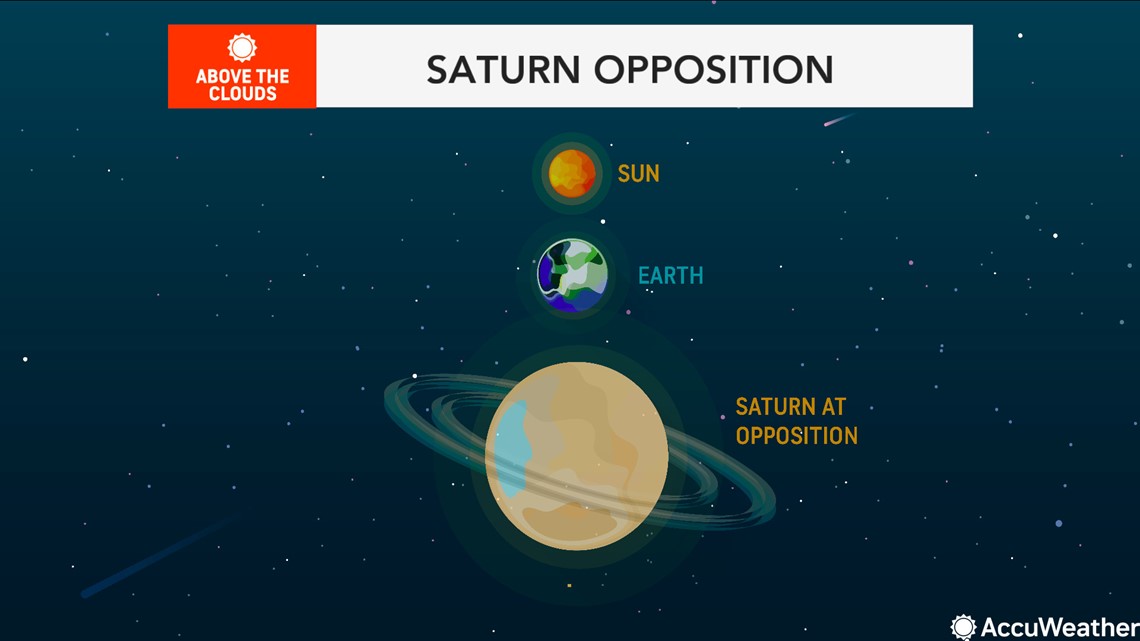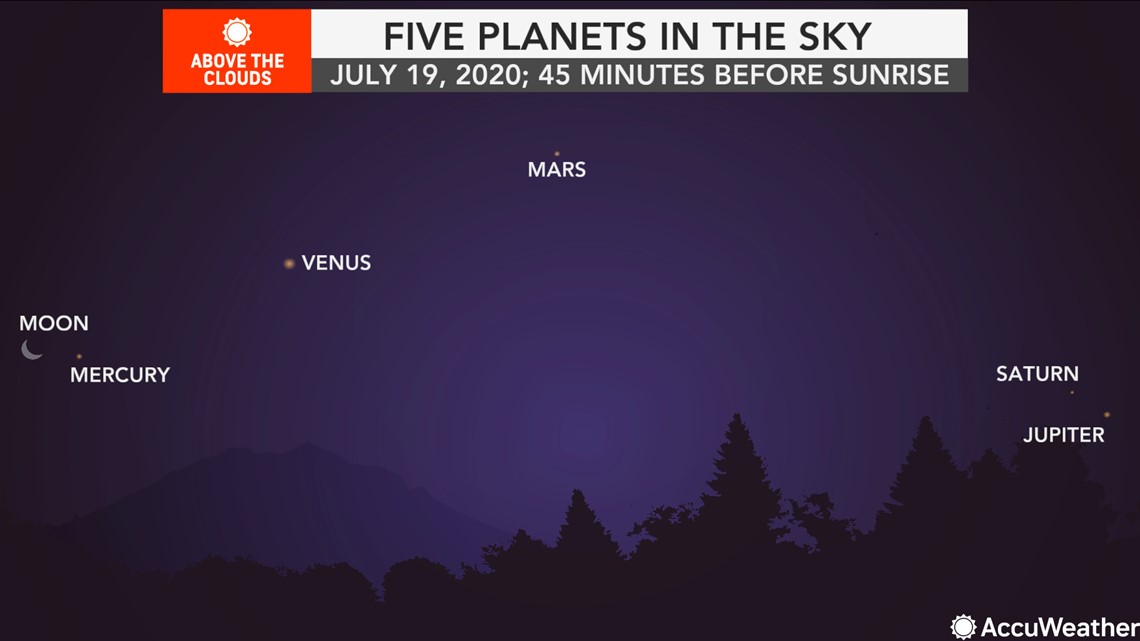Comet NEOWISE has stolen the spotlight this month, but on Monday night, skywatchers may want to turn their attention to one of the most recognizable planets in the solar system.
This summer has been great for stargazers as there has been plenty to see in the sky, and the coming nights will be the best of the year to spot Saturn as it reaches opposition.
"The planet Saturn will appear opposite the Sun as seen from the Earth (called "opposition")," NASA said. "Saturn will be at its closest and brightest for this apparition, effectively a 'full Saturn,' rising around sunset and setting around sunrise."
Saturn will officially reach opposition on Monday, July 20.


Although Saturn will be at peak brightness, it may blend in with nearby stars.
One easy way to find it is to look for Jupiter, which will be incredibly bright and not too far away from Saturn. They will both rise in the evening in the southeastern sky, with Saturn appearing just to the left of Jupiter. The duo will glow side-by-side throughout the night, setting in the southwest around sunrise.
No telescope is needed to see Jupiter or Saturn, but the two are great objects to focus on for people learning how to use a new telescope.
Saturn, in particular, is an interesting object for those with a telescope as focusing in on the planet will reveal its famous rings. Some may even see Titan, Saturn's largest moon.
Pointing a telescope or a pair of binoculars at Jupiter will reveal its four largest moons and perhaps even the Great Red Spot, a storm that has been raging on the planet for hundreds of years.
Night owls and early risers are in for a special treat on the nights surrounding the Saturn Opposition.
About 45 to 60 minutes before sunrise, Jupiter, Saturn, Mars, Venus and Mercury will be lined up across the southern sky.
The thin crescent moon will also be visible next to Mercury on the mornings of Saturday, July 18, and Sunday, July 19.


While Saturn rises in the southeast after sunset, Comet NEOWISE may be visible setting in the northwest below the Big Dipper.
The comet will be visible only through about July 23, so people outside looking for Saturn should also turn around and try to spot NEOWISE before it fades away as it heads back into the depths of the outer solar system.
Saturn will continue to shine next to Jupiter through the rest of the summer, but it will gradually become dimmer heading into the autumn as it moves farther and farther away from the Earth.

